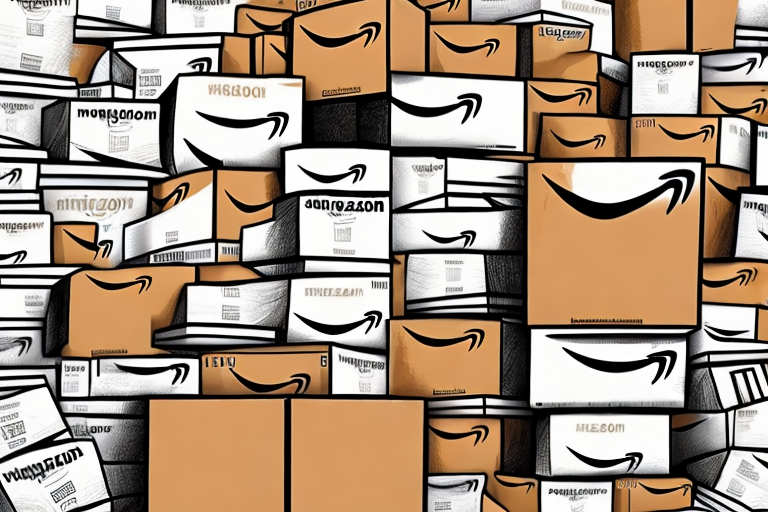Introduction to Amazon's Order Volume
Amazon, founded in 1994 by Jeff Bezos, has evolved into the world’s largest online retailer. As of 2023, Amazon's market capitalization fluctuates around $1.3 trillion, reflecting its substantial influence in the e-commerce sector. Understanding the sheer volume of orders Amazon processes daily provides insight into its operational prowess and strategic positioning in the market.
Growth and Trends in Amazon's Order Volume
Historical Growth
Amazon started as an online bookstore and has since diversified into various product categories, including electronics, clothing, and groceries. Over the past decade, Amazon's order volume has seen exponential growth. According to Statista, Amazon handled approximately 4.5 billion orders in 2022, averaging around 12 million orders per day.
Current Statistics
In 2023, Amazon continues to scale its operations, managing an estimated 5 billion orders annually. This translates to an average of nearly 14 million orders each day. The sustained growth is attributed to the company’s relentless expansion into new markets and its ability to adapt to evolving consumer behaviors.
Future Projections
As e-commerce continues to grow globally, Amazon’s order volume is projected to surpass 6 billion orders annually by 2025. This growth is expected to be fueled by advancements in logistics, increased market penetration in emerging economies, and the continuous enhancement of Amazon Prime services.
Factors Driving Amazon's High Order Volume
Amazon Prime's Impact
Amazon Prime, a subscription-based service, plays a pivotal role in driving order volumes. With over 200 million members worldwide, Prime offers benefits such as free and expedited shipping, access to streaming services, and exclusive deals. Prime members tend to place more orders and spend more per transaction compared to non-members, significantly boosting Amazon’s overall sales.
Technological Innovations
Amazon invests heavily in technology to streamline its operations. The use of artificial intelligence (AI) and machine learning optimizes inventory management, predicts consumer demand, and personalizes the shopping experience. Automated fulfillment centers equipped with robotics enhance efficiency, allowing Amazon to process and ship orders at unprecedented speeds.
Real-Time Data Processing
Real-time data processing enables Amazon to monitor and respond to customer behavior instantaneously. By analyzing purchasing patterns and website interactions, Amazon can adjust its inventory and logistics strategies to meet demand fluctuations promptly. This agility ensures high customer satisfaction and retention rates.
Regional Distribution and Peak Seasons
Regional Distribution of Orders
Amazon operates globally, with significant order volumes concentrated in North America and Europe. The United States alone accounts for over 60% of Amazon's total net sales. However, regions like Asia-Pacific and South America are experiencing rapid growth, contributing to the overall increase in order volumes.
Peak Seasons for Orders
The holiday season remains the busiest period for Amazon, with Black Friday, Cyber Monday, and the holiday shopping season driving the highest order volumes. Additionally, Amazon Prime Day has become a major sales event, offering exclusive deals that attract millions of customers. Back-to-school and summer sales also contribute to spikes in daily orders.
Amazon's Order Fulfillment and Logistics Strategies
Fulfillment Centers and Logistics Network
Amazon boasts a vast network of fulfillment centers strategically located worldwide. These centers are equipped with advanced warehousing technologies that facilitate rapid order processing and shipping. The integration of automated systems and robotic technology enhances operational efficiency, allowing Amazon to handle high order volumes seamlessly.
Order Processing Technology
Amazon employs sophisticated order processing systems that utilize AI and machine learning to predict demand, manage inventory, and optimize delivery routes. These technologies reduce errors, minimize delivery times, and ensure accurate order fulfillment, contributing to the company’s ability to manage millions of orders daily.
Handling Fulfillment Challenges
During peak seasons, Amazon faces significant fulfillment challenges. To address this, the company hires temporary workers to manage the increased workload and partners with external delivery services to expand its shipping capacity. Continuous investment in supply chain technology also helps mitigate potential bottlenecks, ensuring consistent delivery performance.
Implications for the E-commerce Industry
Amazon's dominant order volumes have set a high benchmark for the e-commerce industry. Competitors are compelled to adopt advanced technologies and optimize their logistics to match Amazon’s efficiency. The focus on customer-centric services, such as fast shipping and personalized shopping experiences, has become a standard expectation across the industry.
Strategies for Competing with Amazon
While Amazon's scale presents significant challenges for other e-commerce businesses, there are strategies to remain competitive:
- Enhancing Customer Service: Providing exceptional customer support can differentiate a business from Amazon.
- Offering Unique Products: Specializing in niche markets or unique products can attract specific customer segments.
- Optimizing Order Fulfillment: Investing in efficient logistics and technology can improve delivery times and reliability.
- Leveraging Technology: Utilizing AI and machine learning can enhance inventory management and personalized marketing efforts.
Future Predictions for Amazon's Order Growth
Looking ahead, Amazon is expected to continue its upward trajectory in order volumes. Key factors influencing this growth include:
- Expansion into Emerging Markets: Increasing presence in regions like India and Southeast Asia will drive new customer acquisition.
- Advancements in Delivery Technology: Innovations such as drone deliveries and autonomous vehicles will further expedite shipping times.
- Sustainability Initiatives: Growing consumer preference for eco-friendly practices may lead Amazon to implement more sustainable logistics solutions.
Despite these growth opportunities, Amazon will need to navigate increasing competition and regulatory challenges to sustain its market leadership.
Conclusion
Amazon remains a titan in the e-commerce landscape, processing millions of orders each day through its robust logistics network and innovative technologies. The company's focus on customer satisfaction, continuous technological advancements, and strategic market expansion underpin its impressive order volumes. As the e-commerce industry evolves, both Amazon and its competitors must adapt to maintain and enhance their market positions.




















